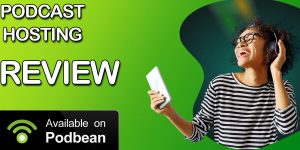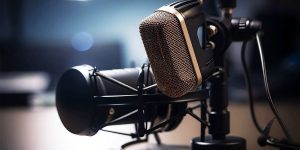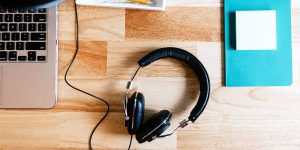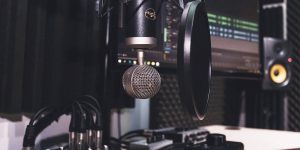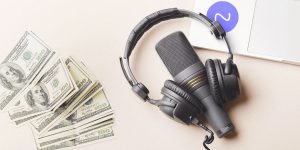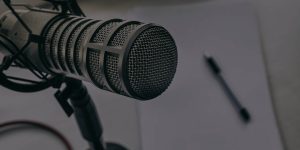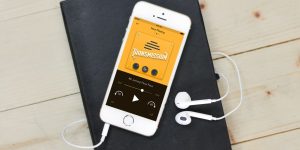From my years in the podcasting trenches, I’ve learned that while content is the heart of any show, the lifeline lies in the audio quality and setup. Navigating through myriad podcast setup ideas was pivotal in ensuring my episodes resonated clearly, free from glitches, and gave me the confidence to share my story.
Explore my comprehensive guide, and together, let’s elevate your podcasting journey!
Space selection

Selecting the perfect space for your podcast is more than important. First, you need to decide: indoors or outdoors? An indoor podcast room setup offers a controlled environment, free from unpredictable external noises. It’s the choice for most because it aligns well with numerous podcast room ideas, ensuring consistent quality. However, outdoor recordings, while challenging, can imbue your podcast with a distinct vibe and ambiance fitting for certain topics. But remember, whether inside or under the open sky, controlling ambient noise is paramount – it’s the bedrock of impeccable audio quality.
Acoustic treatment
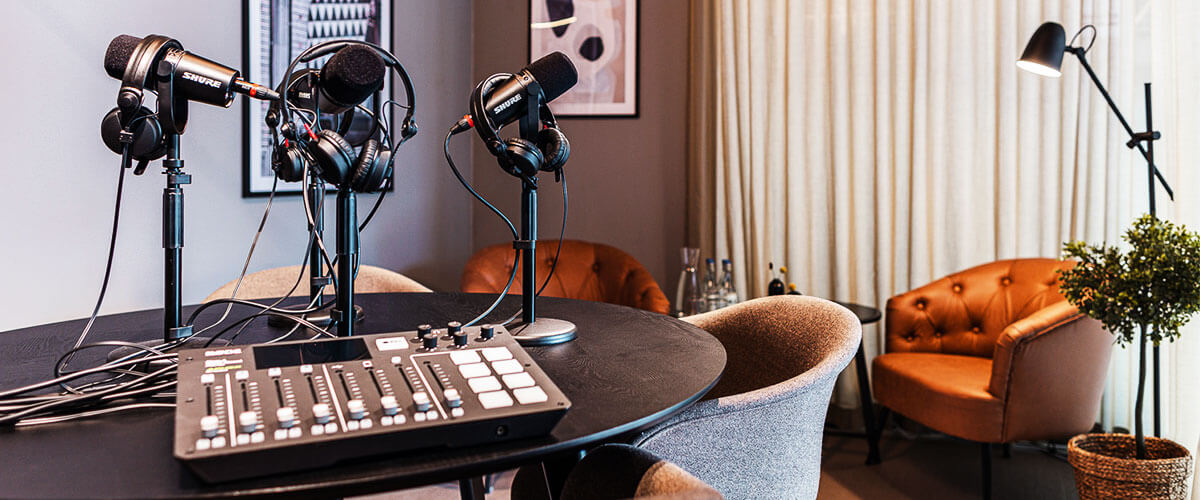
Venturing indoors? Great! But a plain room won’t do. Acoustic treatments are essential. Think of them as the unsung heroes of any podcast room setup. Bass traps absorb low-frequency sounds, preventing muddiness. Diffusers scatter sound waves, reducing echoes. And foam panels? They help minimize sound reflections, ensuring your voice remains clear and unblemished. But if you’re on a budget or feeling crafty, there are DIY soundproofing hacks: heavy drapes, thick carpets, or even strategically placing bookshelves filled with books can make noticeable differences.
After all, good podcast room ideas marry functionality with creativity.
Equipment essentials
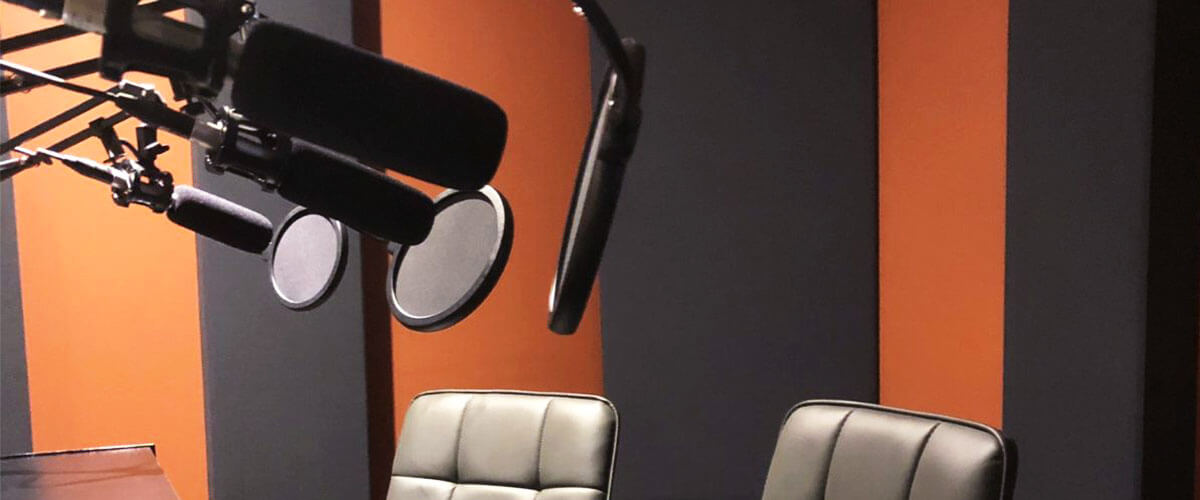
Crafting the ideal podcast studio setup is an intricate balance between your budget and the unique characteristics of your recording environment. Your chosen space’s acoustics, size, and ambient noise play a pivotal role in determining which equipment will serve your needs.
Microphones
USB microphones
These are a godsend for those on a tight budget or just getting started. USB microphones offer the convenience of direct connection to your computer or laptop, making them plug-and-play solutions. Popular models include the Blue Yeti, Audio-Technica ATR2100x, and the Samson Q2U.
Dynamic microphones
While low-end dynamics may not deliver studio-quality sound due to their narrow diaphragm, their strength lies in their selective hearing. These mics are less sensitive to room acoustics and background noises, making them a favorite for many podcasters. Premium dynamic microphones provide stellar quality, but they might require a boost from a good amplifier. My favorite models are the Shure SM7B, Rode PodMic, and the Heil PR-40.
Condenser microphones
If you’re looking to replicate studio-like quality, condenser microphones are the top choice. Typically pricier, they demand a phantom power source and often, an external amplifier. Some crowd-favorites in this category are the Audio-Technica AT2020, Neumann TLM 103, and the AKG C214.
Headphones

After testing various models for my own podcast studio setup ideas, I’ve found that Closed-back headphones are a game-changer. They offer superior sound isolation, ensuring that what you’re hearing is only your recording, free from ambient distractions. Some popular models I’ve come across include the Audio-Technica ATH-M50x and the Beyerdynamic DT 770 Pro. Both are outstanding in their clarity and isolation capabilities.
Audio interfaces and mixers
Audio interfaces
These devices are unsung heroes, converting analog signals into crisp digital ones. The quality of your recording is directly tied to the quality of your interface. I’ve had fantastic results with the Focusrite Scarlett 2i2 and the PreSonus AudioBox USB 96. Both are reliable and offer outstanding sound quality for their price points.
Mixers
If you’re dealing with multiple sound sources, a mixer is a wonderful solution. It lets you balance various inputs, ensuring that your podcast sounds harmonious and well-balanced. From my experience, the Yamaha MG10XU and the Behringer Xenyx Q802USB stand out. They’re user-friendly and provide an excellent sound balance for budding and seasoned podcasters alike.
Decoration, ambient, and mood enhancements
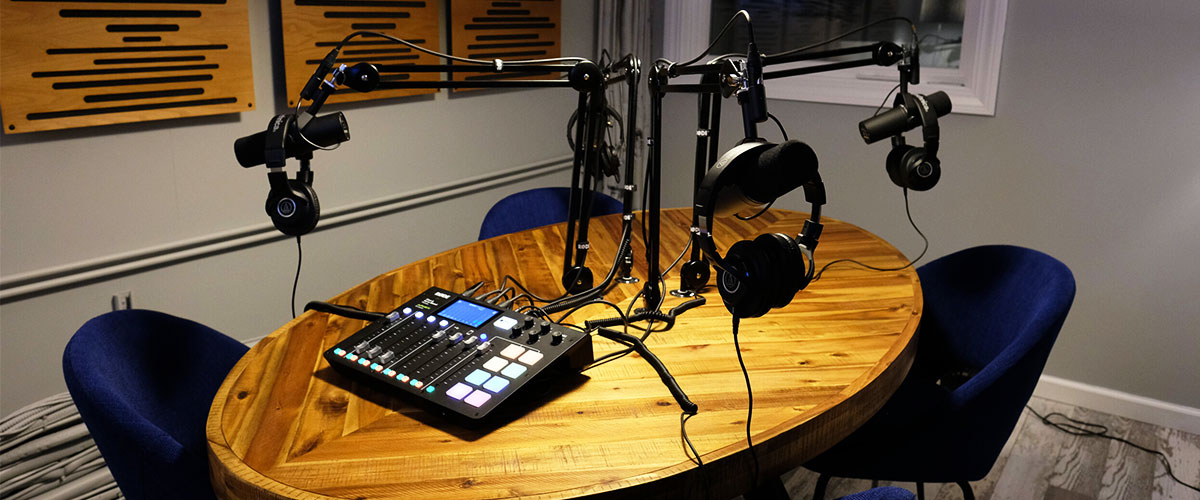
Ah, the aesthetics of a podcast studio – often overlooked, yet immensely influential in setting the right mood. Based on my years of podcasting experience, here’s a bit about crafting the perfect ambiance:
- Desks and chairs: My initial setup had an ordinary table and chair, but once I switched to an ergonomic desk and chair, I noticed a boost in my productivity and comfort. It’s not just about looking professional; it’s about feeling primed for success.
- Storage solutions: Over the years, I’ve accumulated mics, headphones, and tons of cables. Investing in dedicated storage solutions like drawer units and cable organizers transformed my workspace from chaotic to neat, streamlining my workflow.
- On-air signs: An ‘On-Air’ sign outside my door proved to be a godsend! Not only does it deter interruptions, but it also adds a touch of authenticity and makes you feel “in the zone.”
- Lighting: If you incorporate video or live streams into your podcast, good lighting is essential. Soft, diffused lighting not only flatters but creates a warm, inviting atmosphere.
- Plants, artwork, and decor: Personal touches like a favorite plant or piece of art can inspire creativity. In my studio, a framed piece of abstract art and a succulent breathe life into the space.
- Branded backdrop: When I introduced a backdrop with my podcast’s logo, it resonated well with viewers. It subtly reinforces brand recall and looks incredibly professional.
Software solutions
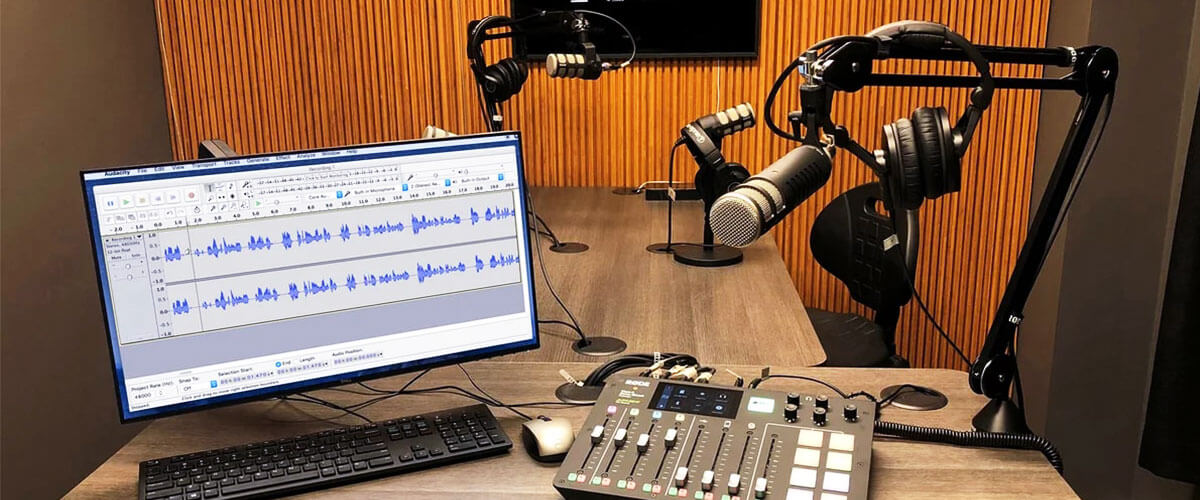
Recording and editing software
Not so long ago, I’ve realized the backbone of any great podcast isn’t just the content, but the quality of the recording itself. Solutions like Audacity, a free, open-source, cross-platform software, is an excellent choice for beginners. For professionals, Adobe Audition offers a plethora of tools to capture and enhance sound. GarageBand is another favorite, especially among Mac users, thanks to its user-friendly interface. These software solutions are indispensable because they not only capture audio but allow for precise editing – ensuring your message is clear and impactful.
Plugins and tools
Once you’ve nailed the recording, post-processing is your next destination. Enhancing the audio using specific plugins significantly elevates its quality. The standard toolkit involves:
- Equalizer: Tailor your audio frequencies to sound clear and balanced.
- Compressor: Ensure your volume levels remain consistent throughout.
- Saturation: Add warmth and richness, giving your podcast that professional sheen.
- Limiter: Prevent any audio peaks that could result in distortion.
If you’re dealing with noisy recordings, iZotope RX is a lifesaver. It’s specialized software designed to tackle unwanted sounds, restoring your audio to its pristine state.
Remote podcasting setups
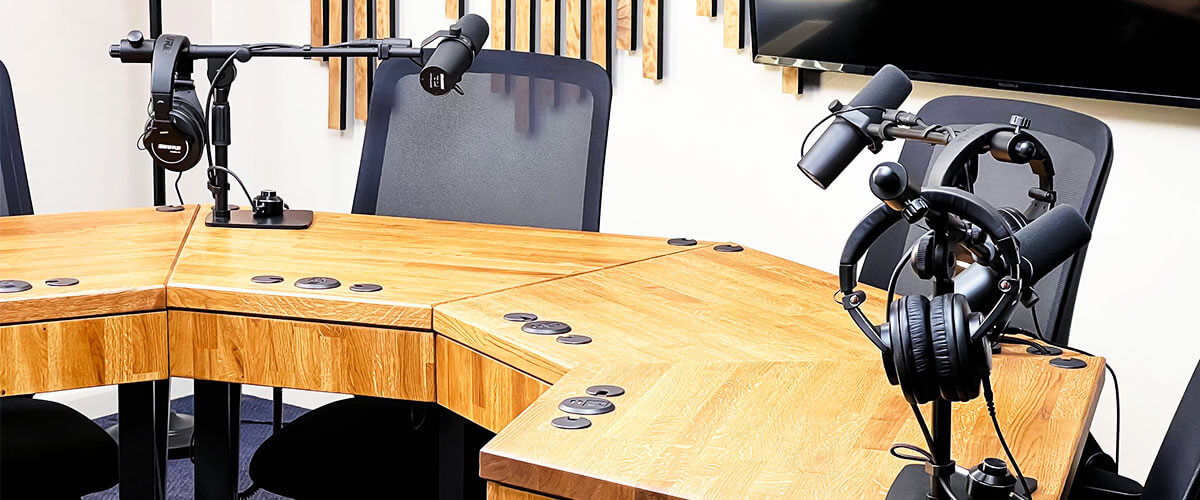
The beauty of the digital age is that we’re no longer chained to traditional recording studios to produce high-quality audio content. Remote podcasting setups have opened up a world of possibilities for creators everywhere. With mobile recording equipment like portable microphones and sleek interfaces, you can quite literally take your show on the road.
One of my go-to tools has been the Zoom H5 Handy Recorder. Its versatility allows for both XLR and 3.5mm inputs, and the audio quality is absolutely top-notch for its size and price. For those impromptu interviews or sudden strokes of inspiration, smartphone apps like Anchor and Ferrite Recording Studio have been lifesavers. They’re designed with podcasters in mind, ensuring that even on-the-go recordings don’t compromise on quality.
Remember, a remote setup doesn’t mean sacrificing clarity or professionalism. With the right equipment and apps, you can be ready to capture the perfect soundbite, interview, or episode, no matter where your podcasting adventures take you.
FAQ
Can I start podcasting with just my smartphone?
Yes, you can! While dedicated microphones and interfaces can enhance audio quality, smartphones today come with impressive built-in mics. For starters, simply find a quiet environment, use recording apps like Anchor, and you’re good to go. As you grow, you can invest in additional equipment for improved sound.
How often should I upgrade my podcasting equipment?
It depends on your goals and audience feedback. If you’re achieving clear audio without issues, there’s no immediate need to upgrade. However, as technology advances and you aim for professional quality, consider evaluating and potentially upgrading your equipment every 2-3 years.
We are supported by our audience. When you purchase through links on our site, we may earn an affiliate commission at no extra cost to you.
Our newsletter
* We will never send you spam or share your email with third parties

